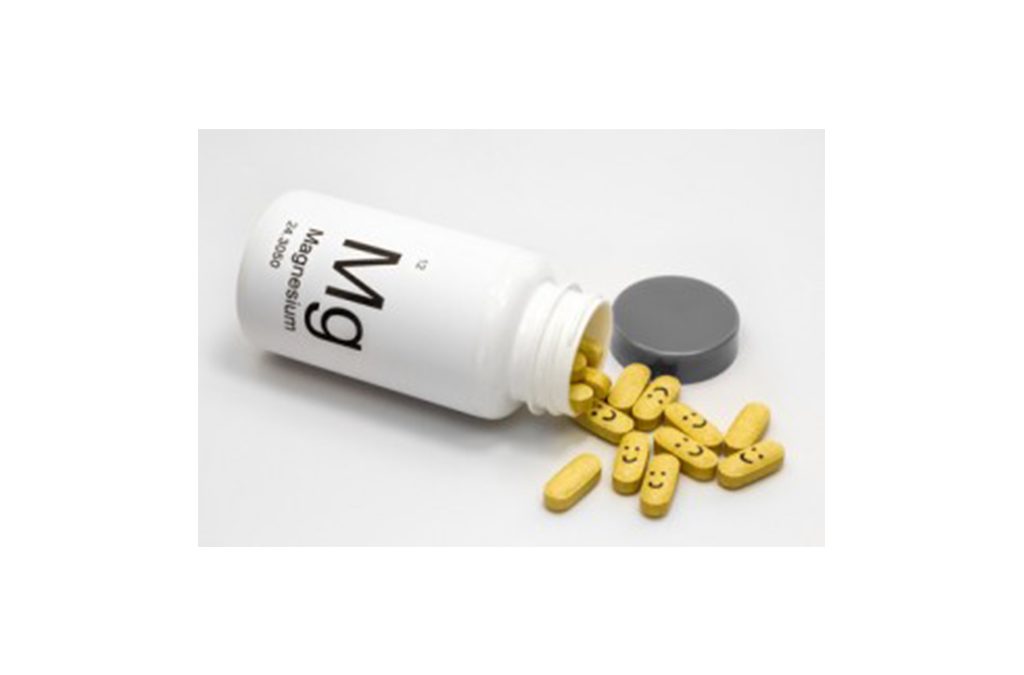
by | Mar 27, 2016 | Uncategorized
Magnesium is one of my favourite supplements and has been largely underrated. Magnesium is one of the most common nutrient deficient in adults, and is so important. It is involved in hundreds of biochemical processes including energy production, muscle relaxation, hormone processing, and bone health. The most common conditions magnesium is used for (but not limited to) include high blood pressure, constipation, fibromyalgia, chronic pain, stress, osteoporosis, headaches, PMS, asthma and restless leg syndrome. Higher intakes of magnesium have demonstrated an increase in bone mineral density, flexibility and integrity, especially in postmenopausal and elderly individuals.
What causes low levels of Magnesium?
Due to the deteriorating soil quality, lifestyle and diet factors in North America, majority of individuals are low in magnesium. Food processing strips our food of many of the nutrients including magnesium. Individuals with gastrointestinal issues can have poor absorption of nutrients in the gut. Calcium and magnesium compete with one another for absorption. With an increasing amount of individuals supplementing calcium alone for their bone health, can lead to low levels of magnesium. Lone calcium supplementation can also lead to calcium deposition in soft tissues contributing to arthritis and kidney stones. Ensuring adequate Vitamin D is important as well. Vitamin D increases magnesium absorption, and a low vitamin D status will impact magnesium levels. Different medications including chronic use of diuretics and proton pump inhibitor decrease magnesium absorption.
Why are there so many types of Magnesium and what do they all do?
Elemental magnesium is not stable and cannot be absorbed in our gut, so it comes bound to a carrier molecule. It can be very confusing because there are a lot of different forms of Magnesium out there, but these just indicate what carrier molecule it is bound to. These carrier molecules influence the percentage of magnesium, it’s absorption and can have health benefits themselves. Even when bound to these carrier molecules only 35%-45% of the magnesium is absorbed. The more depleted an individual is the more they will absorb. Choosing the appropriate Magnesium is very important based on the individual’s concerns.
Magnesium citrate is the most common because it is the best absorbed and inexpensive. Citric acid (citrate) is a mild laxative therefore this form has laxative properties at higher doses. It is a good choice to keep your magnesium levels up. If you require magnesium at higher doses and wish to avoid loose stools choosing something like Magnesium Glycinate would be a better option.
Magnesium Glycinate/Bisglyinate, glycine is a large molecule so there are smaller amounts of magnesium compared to glycine contained in this formula. However, it is a readily available form that is well absorbed in the gut, therefore unlikely to cause loose stools. Glycine is an amino acid and relaxing neurotransmitter, this form is a great option for promoting mental calmness and relaxation throughout the body.
Magnesium Malate is similar to magnesium glycinate, it is a larger molecule with good availability. Malic acid also contributes to ATP synthesis and energy production so optimal for treating fatigue and conditions like fibromyalgia and low energy states.
Magnesium Oxide simply means bound to oxygen. This isn’t the best choice of magnesium because it is non-chelated and therefore has a poor rate of absorption compared to other forms. But at high doses it is a muscle relaxer, nerve tonic and laxative.
Magnesium Taurate is also an amino acid. Taurine helps with cardiac muscle so this form is best for cardiac conditions and general heart health. It helps with high blood pressure, and improves the contraction of the heart without the laxative qualities.
Magnesium Sulfphate or Epsom salts are well absorbed through the skin, so if used externally can help lower blood pressure, decrease muscle tension and reduce stress. If taken internally will have a strong laxative effect, which can be dangerous.
Magnesium Chloride comes in gel/oil, which is good for topical application for cramps and muscle relaxation and has the ability to detoxify cells and tissues.
Magnesium L-threnoate is a new form. It is being studied for it’s impacts on brain function and memory improvement in Alzheimer’s and other cognitive diseases due to it’s ability to cross the blood brain barrier. Further research of this form is ongoing.
Holistic Health NW Calgary
Magnesium is an essential mineral in maintaining our health and well being. It is used in various conditions and is generally very well tolerated. Our daily requirement or RDA for magnesium in a healthy adult is 400mg/day, while some intravenous doses may be as high as 2000mg. Dietary sources of magnesium include coffee, tea, chocolate, spices, legumes, nuts, green veggies (spinach, edamame, avocado), and brown rice. If you are supplementing to improve your levels choosing the right magnesium can make a big difference.
Live your life in a way that improves your health. Contact the clinic and book your initial consultation today!

by | Mar 6, 2016 | Uncategorized
The human microbiome is defined as the “full collection of genes of all the microbes in the human body… it consists of 10–100 trillion symbiotic microbial cells” outnumbering the number of human cells by ten times. (1) An individual’s genome is 99.9% identical to another human, however, their microbiomes will only show 10–20% similarity to one another. This illustrates that the microbiome is immensely important in making each individual different from one another. Majority of our microbiome exists, and is formed, in our gut The microbiome influences many of the processes in the body including physiological and immunological. In fact 80% of the immune system can be found in the gut. The greatest influence of microbiome formation occurs at birth and is dependant upon the mode of delivery.(2) Twenty minutes after a baby is born naturally they will have a microbiome in their gut resembling that of the mother’s birth canal. The microbiome of babies born by caesarean section will resemble those found on the external skin and the bacterium existing in the hospital. The infant’s stomach will then act as an incubator to grow the bacteria it has acquired; therefore, those naturally born have a great advantage over the infants born of a cesarean section. In Canada we have seen a rise in caesarean births from 17% to 27% from 1995 to 2010. (3) This has been labeled the #1 public health problem facing our society.The next large influence of the microbiome is if the infant is given breast milk or formula fed. (2) Formula provides very little beneficial bacterium to an infant’s incubating microbiome.
The diagnostic criteria of Autism Spectrum Disorder (ASD) as described in the Diagnostic and Statistical Manual of Mental Disorders-5 “persistent deficits in social communication and social interaction. Deficits in social-emotional, reciprocity and non-verbal communicative behaviors for social interactions, developing maintaining and understanding relationships.” (5) The term Autism Spectrum Disorder encompasses varying degrees of severity, all children diagnosed with ASD fall somewhere on this spectrum. We have seen a large increase in the rate of autism over the years, it is estimated that 1 in 100 children will be diagnosed with autism in Canada this year. (6) The United Nations estimates up to 70 million people worldwide fall somewhere on the autism spectrum.
What is causing the increasing rate of ASD? This topic has been heavily disputed over the last decade. ASD is a diverse disorder; there are likely numerous contributing factors. Studies have shown that siblings with autism may not carry the same autism risk gene. (7) This leads us to believe that although genetics are involved in ASD, environmental factors are the stronger influence. Now where does the microbiome and gut health come into play? The National Institute of health conducted a study in 2012 with children diagnosed with some form of ASD, they found that 92% of these children had gastrointestinal distress. The CDC estimated that children with ASD have a 3.5x greater chance of having chronic diarrhea and constipation. (7) There is clearly an association between the gut health of children and ASD, but it is undetermined if it is a result or a cause. What we do know with confidence, is that changing the microbiome and improving gut health will have beneficial affects on our health.
A study conducted at Harvard determined that microbiomes are dynamic and can change greatly within a day of modifying an individual’s diet.(8) So what food you eat will determine the bacteria that you grow, and these bacteria can be responsible for activating various genes. Neurologist and author of Brain Maker, David Perlmutter states, “we’re now discovering how gut health and functionespecially gut bacteria connect to brain development… and a brain disorder such as autism.” (7) The composition of children’s gut bacteria is different between children with ASD and those without.(9) The flora of ASD patients tested higher in Clostridium histoyticum bacterium and lower in the good bifidobacteria, in comparison to the floras of healthy children. Bifidobacteria produce vitamins and have antibacterial properties. The Clostridium species of bacteria are known to be toxin producing, these toxins can cause inflammation and adverse effects to immune system and the brain. One of the toxins produced is PPA (Propionic acid) which in the gut will weaken the junctions between the intestinal lining cells, causing foreign substances including PPA to leak into the bloodstream and thus throughout the body. This is termed ‘leaky gut’ and causes a cascade of immune responses, because our immune system is activated whenever foreign substances enter. This cascade can include inflammation and damage to cells. Dr. Derrick F. MacFabe and his team fed a group of pregnant rats and their offspring a diet high in PPA. (7) At one to two months old the rat pups showed developmental impairment similar to what is seen in ASD children.
Most kids with autism have an early life history of at least one or two microbial challenges, including cesarean sections, formula feeding, antibiotic use in the mother or in the child, processed food, NSAIDs, steroids, and various environmental pollutants. To elaborate further on the impact of antibiotics, they do not pick which bacteria to kill, they kill the good and bad. Antibiotics cause a shift in our microbiome and the impact can vary, for example, clindamycin will cause a four-month shift, while ciprofloxacin can impact the microbiome for up to a year. (10) Various antibiotics such as Flouroquinolone, some cephalosporins and sulfur-based antibiotics can cause an overgrowth of the bacterial species Clostridium difficile, this can cause potentially fatal diarrhea. (7) The point of this information is not to discourage the taking of antibiotics as they can be necessary, however, it is important to acknowledge the effect they can have on the microbiome and to take measure to mitigate the shift in our systems.
We are what we eat; higher intakes of unhealthy food during pregnancy and in children up to 5 years old show higher levels of behavioral and emotional problems. (11) Consuming good food is very important but it is equally important to establish a healthy environment in the gut so that we are able to extract the nutrients from our food. For example, serotonin and dopamine are neurotransmitters important in regulating mood and behavior, they are manufactured in the gut. So if ASD children have gastrointestinal challenges, it is likely that they will have difficulty producing these necessary neurotransmitters. Children with ASD have also been found to have lower levels of the amino acids that are required to manufacture these two neurotransmitters. So it is vitally important that they consume lots of protein containing these amino acids. Finally, how do we feed and heal our microbiome? By incorporating fermented foods such as yogurt, kefir, kimchi, sauerkraut, pickles, kombucha, fermented meat, fish, and eggs. These foods have been used in traditional diets for thousands of years. (12). Other important considerations that assist with a healthy microbiome are ensuring high quality food: where it is grown, how it is grown, what happens while and after it’s grown, how quickly it is eaten, how it is prepared.
Oral probiotics are important to establish good bacteria in the microbiome. A more aggressive and unconventional therapy used for individuals with microbiome disruption is fecal microbiota transplantion (FMT). This method has been used since the fourth century CE and is considered a cure for a potentially fatal antibody resistant Clostridium difficile infection. Naturopathic doctor Mark Davis notes FMT “ has been safe and beneficial for people with ulcerative colitis, Crohns, IBS, MS and other conditions.” (13) FMT involves transplanting healthy fecal flora from a donor to the individual with symptoms, this is able to reset, and re-colonize the microbiome quicker than any other treatment. As of 2013 the FDA banned physicians to perform FMT in practice, likely because of the inconsistency and lack of reproducibility from sample to sample. (13) However, physicians can educate patients on how to do this in their own home. Dr. Perlmutter has used it successfully to treat neurological diseases, including a 12-year-old boy with ASD. He began by using oral probiotics, but then switched to FMT, where they saw huge improvements in behavior. (7) I am not implying that FMT is the “cure” to ASD, but wanted to shed some light on a more unfamiliar therapy. There are other important protocols for treating autism that are used in naturopathic medicine that I will not elaborate on including, gluten and casein-free diets, high quality vitamin/mineral supplementation, iron, and essential fatty acids. Before initiating any treatment it is important to consult a Naturopathic doctor.
Autism Disorder Treatment NW Calgary
In conclusion, we can transform our health by transforming our microbiome, the trillions of organisms that exist within us. The microbiome that exists in ASD children is altered, and by promoting healthy bacteria we can improve the behavior and health of these children. Also, by improving the microbiome in the mothers at conception, throughout pregnancy and breastfeeding, we may be able to reduce the rate of ASD in our population. It is important to avoid factors that challenge our microbiome, such as cesarean section and antibiotics; while incorporating things that build and strengthen it, like fermented foods.
To learn more about our treatments offered, click here!
References :
(1) Ursell, LK, Metcalf, JL, Parfrey LW, Knight R. Defining the Human Microbiome Nutr Rev. 2012 Aug; 70(Suppl 1): S38–S44.
(2) Mackie RI, Sghir A, Gaskins HR. Developmental microbial ecology of the neonatal gastrointestinal tract. Am J Clin Nutr. 1999;69:1035S–1045S.
(3)http://healthydebate.ca/2014/05/topic/quality/c-section-variation
(4) Leach J. Reconnecting our ancestral Microbiome proceedings of the 2014 Vermont Traditional Foods and Health Symposium. Sept 25-27, 2014: Shelburne VT. Available at https://www.youtube.com/watch?v=yY34qzDpESk.\
(5) Diagnostic and Statistical Manual of Mental Disorders, 5th Edition: DSM-5. Autism Spectrum Disorder
(6) http://www.ctvnews.ca/health/u-s-and-canadian-autism-rates-on-the-rise-studies-show-1.1749020
(7) Brain Maker; The Power of Gut Microes to Heal and Protect Your Brain-for Life. Perlmutter D. Loberg K. 2015, Yellow Kite Great Britain.
(8) David, LA, et al. Diet rapidly and reproducibly alters the human gut microbiome. Nature 2014, 505, 559–563 doi:10.1038
(9)Parracho HM1, Bingham MO, Gibson GR, McCartney AL. Differences between the gut microflora of children with autistic spectrum disorders and that of healthy children. J Med Microbiol. 2005 Oct;54(Pt 10):987-91.
(10) Happy Gut: The Cleansing program to Help you Lose Weight, Gain Energy and Eliminate Pain. Vincent Pedre (2015) Available at https://mutzelnutrition.infusionsoft.com/app/linkClick/18213/1e5af7ed57248a84/2418527/0e760540b967e8df
(11) Jacka FN, Ystrom E, Brantsaeter AL, Karevold E, Roth C, Haugen M, Meltzer HM, Schjolberg S, Berk M. Maternal and early postnatal nutrition and mental health of offspring by age 5 years: a prospective cohort study. J Am Acad Child Adolesc Psychiatry. 2013 Oct; 52(10):1038-47.
(12) Selhub EM. Logan, AC, Bested AC. Fermented foods, microbiota, and mental health: ancient practice meets nutritional psychiatry. J Physiol Anthropol. 2014; 33(1): 2.
(13) Davis M. Fecal Microbiota Transplantation NDNR Jan 2014 11 (1), Pg 18

by | Mar 6, 2016 | Uncategorized
Vitamin B12 is used in DNA synthesis, red blood cell formation, various metabolic processes including conversion of fats and proteins into energy as well as functioning of the nervous and immune system. Intramuscular B12 or methylcobalamin injections, provide the body with the active form that can be utilized by the body immediately. It is very safe to administer in higher doses, as it is a water soluble vitamin and if not utilized by the body will be excreted readily.
Chronic Stress Treatment NW Calgary
Individuals that may benefit from B12 injections
- fatigue, depression or insomnia.
- poor digestion, Crohn’s or colitis often benefit as they have an impaired ability to absorb B12 from their food.
- elderly population, as B12 levels decline with advancing age
- vegetarians or vegans, vitamin B12 exists almost exclusively in animal foods
- individuals taking certain medications can deplete the body’s Vitamin B12: Metformin, phenobarbital, various anti-inflammatory medications, birth control pills, and antibiotics
- nerve pain/tingling
- chronic alcohol use
- detoxification
To learn more or to book with one of our Naturopathic Doctors call 403-452-6262.

by | Mar 3, 2016 | Uncategorized
In our fast paced technology accessible lifestyles we naturally incur stress. What happens to us when we to cross over the edge of dealing with it to being overwhelmed by it. How does that affect our bodies? Our bodies are meant for some stress but not constant stress. More importantly what is happening to our bodies ability to communicate when we are constantly stress. Every moment our body is receiving information coordinating it and deciding what to do with it. CranioSacral Therapy use light touch therapy to tune into this communicative part of the body called the nervous system. We look for tension patterns held in the nervous system that are creating too much chatter and preventing the system from dealing with stress. Our goal is to allow your body to come as close to balance as possible so that healing can occur.
Chronic Fatigue Treatment NW Calgary
Come in today and take an hour to allow your body the chance to DE-Stress and return to a more balanced state!
I look forward to working with you to assist you on your journey, in and towards health. Don’t miss out on my introductory specials!
First Time Service – One hour – $70
Course of Treatment – Summer Special (4 sessions) – $295

by | Jan 19, 2016 | Uncategorized
The Veggie Challenge
Dr. Michelle Hagel ND
Eating enough vegetables everyday can be quite challenging. I hear from so many people that they know they should eat more vegetables and they want to, they just don’t know how. Here are 7 easy ways to incorporate more vegetables into your diet, and hide the taste from the pickiest of eaters.
Healthy Tips Northwest Calgary
1. Soups, Chillis and Stews: Think all the vegetables in a bowl of chicken noodle soup they are virtually undetectable. Homemade soups and stews are one of my favourite things, especially if the broth is made from scratch- there is so much valuable nutrition in bone broth. Then you can add all kinds of vegetables: carrots, tomatoes, celery, onions, sweet potatoes, zucchini, chopped up kale… use your imagination. When vegetables are in chili, soups, and stews, they get really soft and tasty.
2. Super Smoothies: My other favourite hider of the vegetables! I promise you that you won’t be able to taste a handful of spinach or kale in your smoothie if it is paired with some protein powder, berries, almond/coconut milk, nuts etc. Some people don’t like the texture of kale, just ensure that you have blended it enough. I’ve added all kinds of greens to my smoothies and even carrots and cooked beets without tasting any of them.
3. Availability: Have veggies on hand, stock up on them when you’re at the grocery store. Cut them up and have them ready to just grab when you reach into the fridge for a snack. Or cook extra the night before with dinner and have the leftovers available.
4. Get creative: Dehydrate or bake veggies so that they are crunchy and satisfy those chip cravings. Homemade baked kale chips, baked sweet potatoes fries, or baked green beans. Try cooking vegetables different ways try it raw, steamed, boiled, baked, roasted, BBQ, stir-fried, or pureed. Each method will taste completely different.
5. Sauces and Dips: If you don’t like the vegetables plain, try them with healthy dips, like salsa, guacamole, hummus, dressing or yogurt based dips.
6. Fancy up that salad: If salads aren’t your thing, think about trying different dressings, or making your own. Use spinach, kale and mixed greens instead of just lettuce. Add some nuts, seeds or protein (chicken, tuna, shrimp etc.)
7. Weekly New Veggie Challenge: Commit to one new vegetable a week, try eating the selected vegetable every or even every second day, we don’t want you to get sick of it. You will be surprise how after consuming a vegetable consistently you will start liking it even if you didn’t before.
Increase your intake of veggies and improve your health! If you have questions, contact us today! We would love to hear from you.





